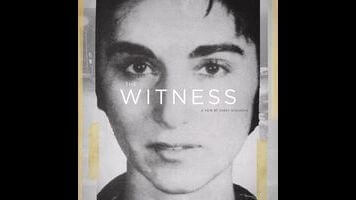March 13, 1964: Thirty-eight people watch or listen as a young woman is brutally stabbed to death outside their Queens apartment complex; not one of them intervenes or calls the police, even after the assailant leaves and then returns to finish the job. For half a century, the murder of Kitty Genovese (and the apparent indifference of her neighbors) has gripped the public imagination, inspiring everything from the invention of a new psychological term (the bystander effect) to the adoption of the 9-1-1 phone code to a cynical certainty that the average person does not—to quote one of the supposed witnesses—“want to get involved.” The Witness joins a long list of books, articles, case studies, and dramatizations on the infamous incident. The ace up its sleeve is a personal angle: Rather than tackle the subject matter from a safe remove, it does so through the eyes of Kitty’s younger brother, Bill, who embarks on a crusade for truth, hoping to make sense of what happened to his sister and why no one tried to save her.
So what does he uncover? Not much that hasn’t already been discussed in length elsewhere, honestly. The Witness has the appearance of investigative journalism, but most of its muckraking is secondhand. Bill, who was only 16 when Kitty was murdered, retraces the steps of various reporters, pores over the transcripts of the trial, and revisits the scene of the crime (restaged by director James D. Solomon using sketchy animation). In the process, he discovers the holes people have been poking in the official story for years: that there may not have been 38 witnesses; that many of said witnesses didn’t know what they were seeing (or, more likely, hearing); and that the police were called, probably more than once. Bill attempts to track down some of the 38 but finds that many of those whose names weren’t lost are either dead or uninterested in being interviewed. (“That wasn’t my behavior,” insists one of the few bystanders who submits to questioning, an elderly woman surprised and a little mortified to learn that she may have been included in the tally.)
Solomon and Genovese started filming The Witness back in 2004, shortly after The New York Times published a reconsideration of its original front-page story, a sensationalized cry of outrage heard across the globe. The film is perhaps most fascinating when examining the journalistic ethics and reliability of that seminal article. While now-deceased A.M. Rosenthal, who edited the metropolitan section at the time, appears on camera to swear by the veracity of the piece, others aren’t so sure. The case is made that embellishing the details served a valuable social purpose—that it threw a spotlight on some unflattering aspect of city life or even human nature. A less charitable explanation: Fudging the facts helped sell more newspapers. One interviewee even suggests, somewhat chillingly, that the article’s author left out the number of witnesses who didn’t realize a murder was happening because “it would have killed the story.” Another explains that no one questioned the reporting because it was coming from the Times.
Less compelling is the human-interest spin, even if that’s really the sole way that The Witness distingushes itself from other retrospectives. It’s clear that Kitty’s murder cast a long shadow over the lives of her surviving family. Bill, a Vietnam veteran who lost his legs in the war, seems not just permanently haunted by her death but also consumed by a just-below-the-surface rage toward those who let her die. (One relative, in a bit of amateur psychoanalysis, goes as far as framing his entire series of life choices—including joining the military—as a response to the incident.) But despite a few scenes of family members practically begging Bill to drop his crusade, The Witness is less interested in examining his obsession—only amplified by the 11 years spent filming this very movie—than it is in helping him show everyone that Kitty was more than “a symbol of bystander apathy.” What that means is a lot of not-especially-illuminating interviews with her friends and loved ones. The intentions are definitely pure, but a biographical profile of an ordinary 28-year-old woman who was tragically, randomly killed doesn’t make for the most riveting cinema.
Perhaps because any real closure is impossible at this point, The Witness eventually embraces its own inconclusiveness, like some documentary cousin to Zodiac. It’s not for a lack of trying that it fails to create a satisfying punctuation. When attempts to secure a one-on-one with Winston Moseley, the imprisoned culprit, inevitably stall out, Bill sits down instead with the man’s son, whose own defensive rationalizations mirror those applied to the witnesses themselves. As big-get interviews go, it’s both contentious and a bit anticlimactic. Solomon then engineers an alternative dramatic finale, one that brings Bill’s quest full circle. But the stunt—one part recreation, one part social experiment—is so awkwardly established and staged that it’s never clear if it’s been arranged to confirm or refute the 38-witnesses legend, or simply to provide this bereaved brother with some closing catharsis. The answer is probably both, but like a lot of The Witness, it will mean much more to Bill than it ever could to us.


 Keep scrolling for more great stories from A.V. Club.
Keep scrolling for more great stories from A.V. Club.